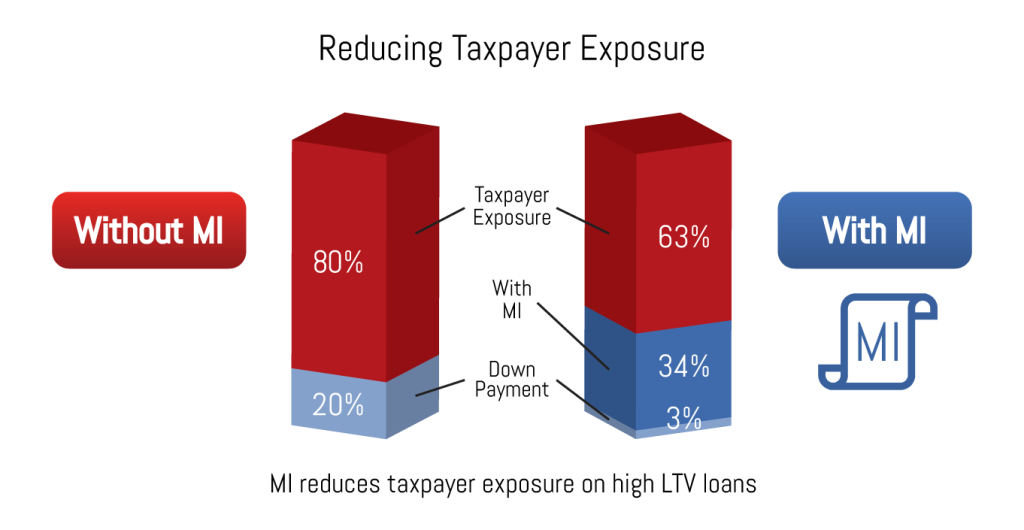Yesterday, USMI submitted comments on the request for input from the Federal Housing Finance Agency (“FHFA”) regarding the proposed structure for a single security to be issued and guaranteed by Fannie Mae and Freddie Mac (the “GSEs”). USMI supports FHFA’s goal of maintaining a highly liquid secondary market while developing a single security, and believes that private MI will help to achieve that objective. Private MI works seamlessly with the to-be-announced (“TBA”) market today and enhances market liquidity by serving as a source of private capital. Preserving the current role of MI and expanding the use of MI as part of any transition will maximize taxpayer protection and enable an efficient and liquid market that benefits lenders, investors, taxpayers and borrowers. USMI looks forward to working with FHFA as work on this initiative progresses.

BY ELECTRONIC SUBMISSION
Federal Housing Finance Agency
Office of Strategic Initiatives Constitution Center
400 7th Street, SW
Washington, D.C. 20024
Re: Request for Input – Proposed Single Security Structure Ladies and Gentlemen:
U.S. Mortgage Insurers (“USMI”) welcomes the opportunity to submit comments on the request for input from the Federal Housing Finance Agency (“FHFA” or “Agency”) regarding the proposed structure for a single security (“Single Security”) to be issued and guaranteed by Fannie Mae and Freddie Mac (collectively, the “Enterprises”). USMI supports FHFA’s goal of maintaining a highly liquid secondary mortgage market in developing the Single Security structure and believes that potential disruptions that might arise from moving to the structure can be mitigated through the preservation of key elements of the existing to-be-announced (“TBA”) market, including the use of private mortgage insurance (“MI”) as a form of credit enhancement. A liquid, well-functioning TBA market is essential to providing single-family borrowers an affordable and accessible 30-year fixed rate mortgage, and large and small lenders alike rely on this market to securitize loans and manage risk.
As further discussed below, USMI supports FHFA’s efforts to work to implement a Single Security. In particular, we note that:
- MI works seamlessly today with the TBA market and enhances the liquidity of the market by serving as a source of private capital that enables the TBA market to operate very effectively for investors, lenders, taxpayers and, most importantly, borrowers. Also, as MI continues to expand access to homeownership, larger securitization volumes will support greater liquidity in the TBA market.
- In any transition to a Single Security structure, preserving the current role of MI and expanding the use of MI will maximize taxpayer protection from credit risk while obtaining the full liquidity potential benefit of the Single Security structure.
The TBA market, as FHFA notes in its proposal, is a cornerstone of a strong and highly liquid secondary mortgage market that benefits taxpayers, lenders, investors, and borrowers. A transition to a Single Security structure will undoubtedly produce some anxiety among stakeholders in the housing industry. Retaining the elements of the current TBA market that lenders and investors have relied upon for years, such as standard cover MI, will help ensure that such anxiety does not disrupt the housing market.
MI is an essential component of the TBA market because of the many benefits it provides taxpayers, lenders, investors, and borrowers. MI has transparent pricing and credit terms that enable participants in the housing market to make informed judgments when assessing mortgages with MI. These terms also create an additional oversight mechanism for the housing market by serving as a form of review of creditors’ and other market participants’ standards.
MI provides a source of private capital that serves to reduce the risk to taxpayers from the Enterprises’ operations by placing MI’s private capital in a first loss position and to enable the Enterprises to support low down payment mortgages with loan-to-value ratios in excess of 80 percent. Without MI, many borrowers, especially first-time homebuyers, low-to-moderate income homebuyers, and homebuyers in underserved communities, would not be able to afford the purchase of a home. MI thus ensures liquidity for a critical part of the residential mortgage market. MI companies have a demonstrated history of making credit available to low down payment borrowers through times of financial stress. Finally, MI contributes to market stability during challenging housing conditions by facilitating foreclosure prevention and loss mitigation to the extent borrowers experience financial hardship.
Earlier this year, FHFA published a draft of revised MI eligibility requirements (“PMIERs”). When finalized and implemented, the PMIERs will be a unified set of standards applicable to all MI companies seeking to do business with the Enterprises. The final PMIERs will solidify MI’s value in the U.S. housing finance system and also will help promote fungible Enterprise mortgage backed securities (“MBS”); a key step towards a Single Security structure.
The remainder of this comment letter responds to two specific questions in the Agency’s request for input.
1. What key factors regarding TBA eligibility status should be considered in the design of and transition to a Single Security?
Because of the extensive benefits of MI described above, FHFA should ensure that all legacy Enterprise MBS reflecting loans with MI remain eligible for the TBA market and that MI’s role as a form of credit enhancement is fully recognized in the analytics calculating the Enterprises’ estimated costs of providing a credit guarantee in a Single Security structure. Recognizing that not all loan level credit enhancements have the same or even similar regulatory environments, the TBA market would be well-served by ensuring that loan level credit enhancements have equivalent capital, reserve, liquidity, and leverage requirements in order to preserve the uniformity and fungibility that is in place in this sector of the market today. By fully recognizing MI in a Single Security structure, the Agency will maximize liquidity in the secondary mortgage market.
4. What can be done to ensure a smooth implementation of a Single Security with minimal risk of market disruption?
Market disruption from the transition to a Single Security framework can be mitigated by preserving the role that MI plays as a form of credit enhancement. FHFA’s implementation of a Single Security structure will require significant changes to the Enterprises’ MBS and disclosure and notice to the housing industry well in advance of the effectiveness of such changes. By refraining from making any changes to either the status or effect of MI, the Agency will leave unaltered an important component of the secondary mortgage market. This will give housing industry stakeholders certainty that, amidst many changes, MI will continue to play an important role in the Enterprises’ securitization activities.
* * * * *
USMI appreciates the opportunity to comment on FHFA’s Single Security proposal. Questions or requests for further information may be directed to the co-chairs of USMI, Rohit Gupta and Adolfo Marzol, at info@usmi.org.
Sincerely,
U.S. Mortgage Insurers
Download as PDF















